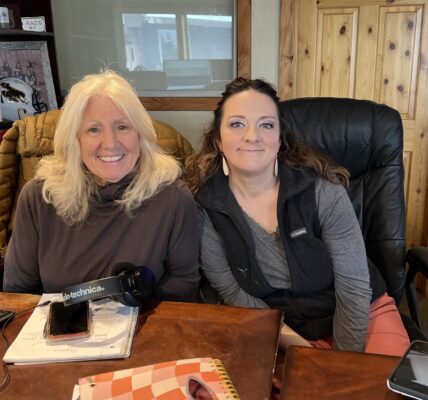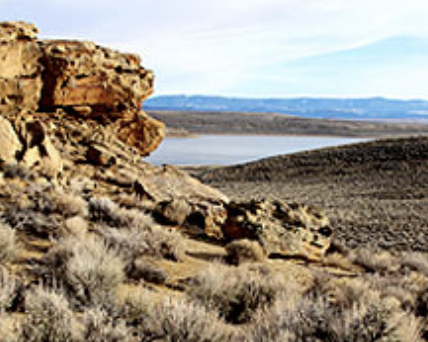By Abby Vander Graaff
Laramie Boomerang
Via- Wyoming News Exchange
LARAMIE — Interstate 80 is coming under scrutiny again as the Wyoming Department of Transportation has made an informal proposal to the federal government to consider a reroute of the interstate to cut down on winter closures.
The proposed reroute would follow U.S. Highway 30, interchanging at Laramie and going through Medicine Bow before connecting with the existing interstate near Walcott Junction east of Rawlins.
“(A reroute) would benefit our nation’s economy, because we know across the breadth of I-80 that we cause disruptions,” WYDOT Director Luke Reiner said about frequent winter closures of stretches of the interstate.
In December, at least one section of I-80 in Wyoming was closed 15.8% of the time to commercial vehicles and 7.8% of the time to passenger vehicles, according to WYDOT data.
The numbers are up compared with the same time in 2020, when the interstate closed 5.4% and 1% of the time, respectively.
When WYDOT officials discuss closing the interstates or highways, they do so with an estimate that it impacts the nation’s economy by roughly $1 million a hour, said WYDOT engineer Tom DeHoff.
“Since I-80 is an important freight corridor, closures have a huge impact on the movement of freight and the supply chain,” said Sheila Foertsch, director of the Wyoming Trucking Association.
Assuming that about $4 million worth of goods are transported every hour and that the interstate closes about three days a month in the winter, a reroute could impact commerce from roughly $1.7 billion to $1.4 billion a year, said University of Wyoming economist Anne Alexander.
According to those numbers, the government could recoup the estimated $6 billion rerouting investment in about 17 years, reaching the benchmark for infrastructure investments, which is to have investments pay off within 20 years, she said.
“Interstate 80 is the most important road in this country,” Alexander said. “If you can’t use it, it’s a barrier for economic growth.”
The estimated price tag of the proposal is reasonable compared with other transportation projects, Alexander said.
A revamp of the automotive transportation system in Boston cost more than $15 billion, and the proposed Gateway tunnel project under the Hudson River is estimated to cost at least $12 billion.
Reiner said the I-80 proposal is a best-case scenario that would be impossible unless money for the project came from the federal government.
After overcoming the largest hurdle of acquiring funding, officials would begin seeking public comment on the project, creating environmental assessments and considering the logistics of routing and interchanges, DeHoff said.
The presence of Highway 30 along the proposed route could simplify issues of land acquisition, but the project would still take years to complete.
There also is a question of how this would impact the communities that Interstate 80 would newly intersect or avoid. While Laramie and Rawlins would likely keep their status as travel hubs, joined with Rock River, Medicine Bow and Hanna.
At the same time, Arlington and Elk Mountain would miss the traffic. While those towns could be connected to the interstate through existing interchanges, decision makers will have to weigh the cost and benefits.
“Elk Mountain is a destination in and of itself, and that’s why they said originally to move the interstate that way,” Alexander said. “But that comes at a cost of billions of dollars of commerce each year.”
Foertsch said the Wyoming Trucking Association Board of Directors would be interested to learn more about a rerouting proposal, though safety would have to be a consideration.
“We would want to ensure that any reroute took into consideration appropriate safety improvements, impacts to the surrounding communities along both routes as well as the efficient movement of freight through the state of Wyoming,” Foertsch said.
In the meantime, Reiner explained that road closures and maintenance are a top priority for WYDOT, especially along I-80.
“The men and women out there maintaining that road in those bright orange snow plows are working hard and diligently to keep that road open,” he said.
WYDOT has multiple teams assigned to stretches of interstate who can assess weather impacts and maintain the road through the use of specific chemicals and plowing techniques that match the situation, DeHoff said.
When there is a big storm in a specific area, teams may consolidate their resources on those problem areas, all with the central goal to keep the road open and safe. Keeping traffic moving on the interstate actually helps improve conditions.
The department also employs preventative methods to keep the roads clear, such as through the installment of snow fences, which prevent snow from blowing into roadways.
WYDOT even installed solar snow fences along I-80 between Laramie and Cheyenne as part of a pilot project. Shaped the same as a traditional snow fence, the solar panels could someday provide the energy for road signs.
While the department continues to deal with the reality of the interstate it has, Reiner said big ideas for the future can’t hurt.
“If you don’t throw it on the table, nobody can say yes,” Reiner said.






